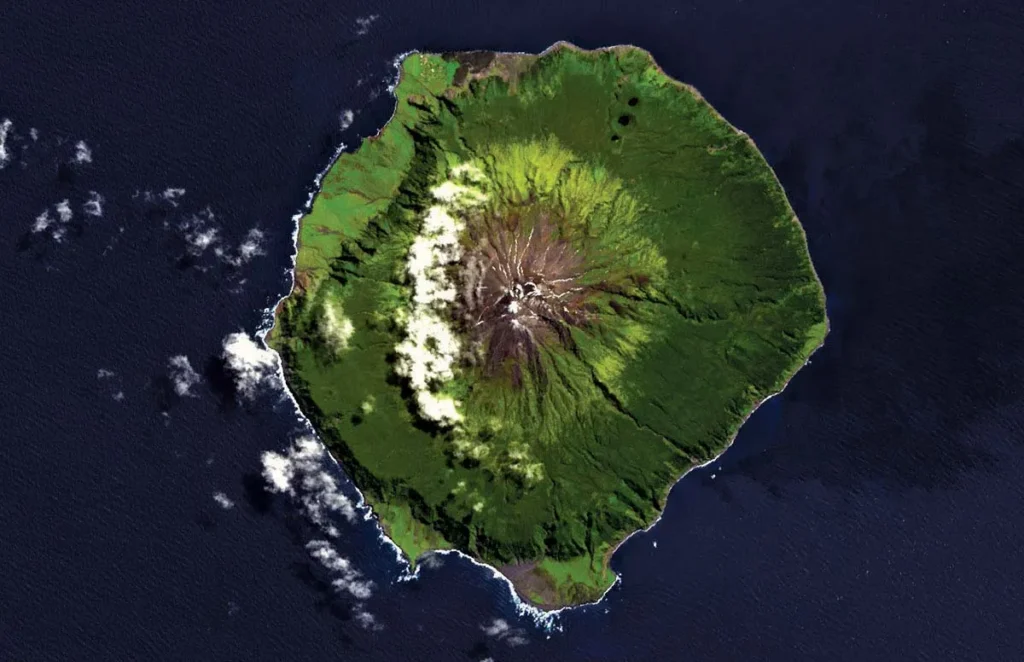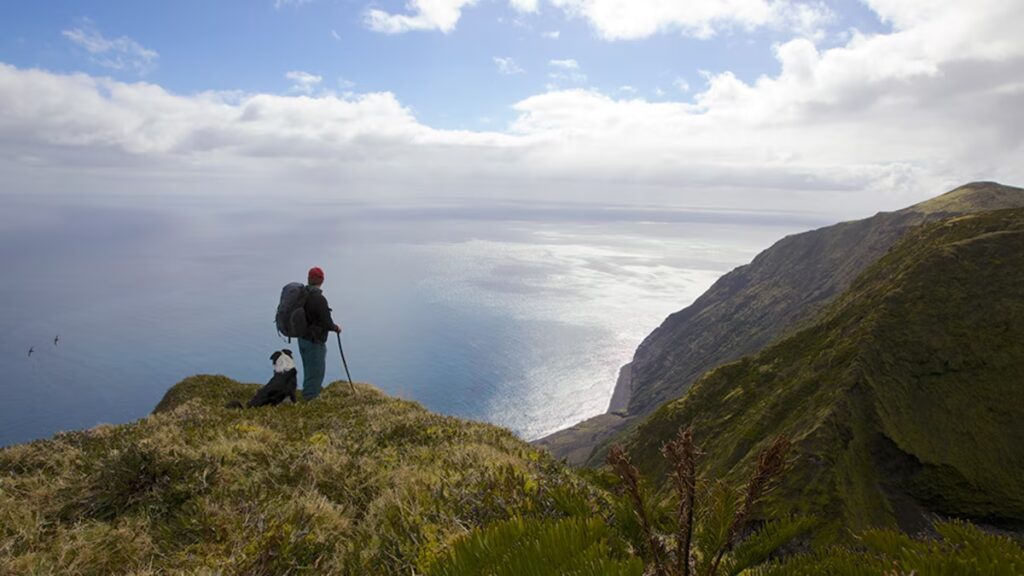In an age of constant connectivity and GPS-guided travel, there still exists a place so remote, so defiantly isolated, that even getting there is an expedition. Tristan da Cunha, often called the most remote inhabited island in the world, lies deep in the South Atlantic Ocean—over 2,400 kilometers from the nearest continent and accessible only by sea. There are no airports, no resorts, and no tourist traps. Just a handful of homes, wind-swept volcanic cliffs, and a community living quietly at the edge of the world.
To sail to Tristan da Cunha is not just to travel. It is to unplug, unlearn, and undo the assumptions of modern life. It is a journey as much about solitude as it is about geography.
Finding Tristan: A Pinprick in the South Atlantic

Tristan da Cunha is part of a British Overseas Territory, along with its neighboring islands (Inaccessible, Nightingale, and Gough). It sits roughly halfway between South Africa and South America, a tiny volcanic island rising steeply from the sea. With a population of just around 250 people—all residing in the village of Edinburgh of the Seven Seas—Tristan isn’t just geographically distant; it’s culturally and emotionally untethered from the rush of the modern world.
There are no commercial flights. In fact, there’s no airport at all. To reach Tristan, one must sail—typically from Cape Town, on a voyage that takes six to ten days depending on weather. Only a handful of ships make the trip each year: a few scientific missions, supply vessels, and the occasional adventurer’s yacht. You don’t casually visit Tristan; you commit to it.
The Voyage: Days of Sky and Sea
The journey itself is transformational. Days stretch long and slow as the ship cuts through waves that deepen in hue the farther you drift from land. The stars reclaim the night sky in brilliant, unpolluted clarity. Without cell towers, schedules, or social media, time softens. Conversations deepen. You start to notice the nuances of cloud formations and the rhythms of the ocean swell.
For many, the voyage becomes a meditative reset—an intentional disconnection from the noise of the 21st century. Seasickness might challenge your resolve early on, but for those who endure, the reward is profound: arrival at a place where life moves by tides, not timetables.
First Sight: A Volcano at Sea
After days at sea, the silhouette of Tristan da Cunha emerges like a mirage—a lone, volcanic cone rising from the water, often shrouded in mist. Its peak, Queen Mary’s Peak, towers over 2,000 meters, usually snow-capped even in summer. The island is both majestic and humbling, its steep cliffs a natural fortress against the outside world.
Edinburgh of the Seven Seas, the island’s only settlement, is a scatter of homes with tidy gardens, surrounded by fields where sheep graze and albatrosses nest. There are no hotels—visitors stay in the few available guesthouses or with island families. Electricity is limited, and supplies are carefully managed. Everything not grown or caught locally arrives by sea, often months apart.
Life on the Edge

Despite its isolation, Tristan is not barren. The islanders are descendants of a small group of settlers, including Scottish, English, Italian, and Dutch heritage, and their community is tight-knit, cooperative, and deeply self-sufficient. Fishing—particularly for lobster—is the mainstay of the economy, supplemented by farming, crafting, and limited tourism.
Life here is shaped by weather and the ocean. There’s a rhythm to the days: tending to livestock, mending fishing nets, gathering with neighbors at the community hall. Children attend school until age 16, and many adults have multiple roles—farmer, firefighter, postmaster—all in one day.
Modern conveniences are rare. Internet exists, but is slow and limited. There’s one bar, one school, one post office. But what the island lacks in variety, it makes up for in sincerity. Every person you meet knows your name by the second day. Every handshake carries weight.
Nature Untouched
Tristan da Cunha is also a haven for wildlife. The surrounding waters are a marine sanctuary, and nearby Gough Island is a UNESCO World Heritage Site, home to endangered birds found nowhere else on Earth. The rugged terrain is perfect for long hikes across lava fields and up verdant ridges, with panoramic views that rival the world’s most dramatic coastlines.
Seals bask on black sand beaches. Rockhopper penguins waddle along the cliffs. Albatrosses soar overhead on six-foot wingspans. The natural beauty here is raw, unfiltered, and wonderfully unspoiled.
A Lesson in Slowness

For those who make it, the magic of Tristan lies in its slowness. There’s no itinerary, no attractions in the commercial sense. The days are shaped by weather, by communal meals, by long conversations and quiet walks. It is a place that asks nothing and offers everything—if you’re willing to be still and listen.
Here, the world feels a little bigger, the past a little closer. You learn to appreciate essentials: warmth, food, companionship, and the mesmerizing pull of the sea. You come looking for remoteness but find instead a powerful sense of connection—to nature, to people, and to yourself.
Final Thoughts
Sailing to Tristan da Cunha isn’t easy, and it isn’t for everyone. But that’s the point. It’s a journey for those who want to step off the map, not just geographically, but spiritually. It is not escape, but arrival—at a place where the world slows, and the soul breathes.
In a society obsessed with speed, Tristan da Cunha stands as a rare sanctuary of stillness. And for the few who venture there, it’s a reminder that the most remote places can offer the most profound connections.
